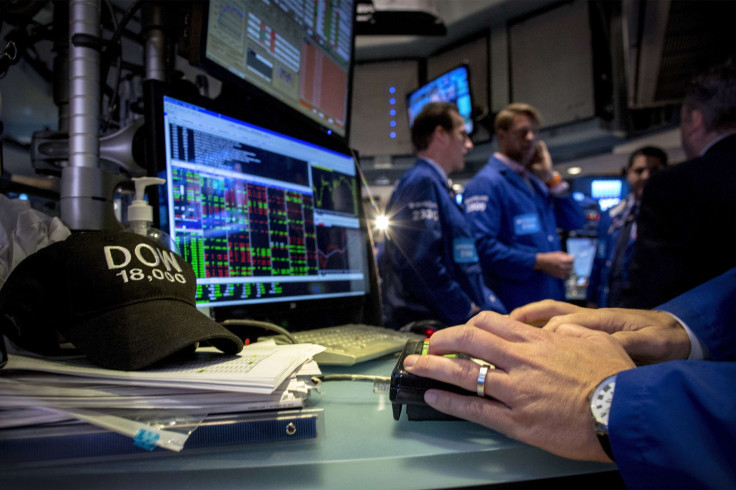Dow Jones Industrial Average Leaps More Than 200 Points, But Gains Cut After Oil Prices Tumble

U.S. stocks soared Thursday, rebounding from the previous session’s decline, after investors cheered strong retail sales and jobless claims, sending the Dow Jones Industrial Average soaring more than 200 points in early trading. However, U.S. crude oil prices fell below $60 a barrel for the first time since July 2009, cutting some of the session's gains in afternoon trading.
The blue-chip Dow Jones Industrial Average climbed 63.19 points, or 0.36 percent, to finish at 17,596.34; the S&P 500 stock index, which tracks the share prices of the nation's 500 largest publicly traded companies, rose 9.19 points, or 0.45 percent, to end at 2,035.33. The tech-heavy Nasdaq Composite added 24.14 points, or 10.52 percent, to finish at 4,708.16.
Data released Thursday showed retail sales jumped 0.7 percent from October, and 4.9 percent above the same period a year ago, the Commerce Department said. The stronger than expected data helped ease market concerns about weak consumer spending following initial Black Friday and Thanksgiving weekend sales. Economists had expected retail sales to increase 0.3 percent last month, according to analysts polled by Reuters. The October retail sales report was revised higher from 0.3 percent to 0.5 percent.
While falling oil prices serve as a headwind for the global economy in the long term, experts say its affect are a tailwind for the U.S. economy in the short term as gas prices continue to decline. The average cost of gas in the U.S. is $2.61 per gallon, according to gasbuddy.com. Thursday, U.S. oil benchmark West Texas Intermediate crude (WTI) fell 1.85 percent to $59.81 a barrel, for Jan. 15 delivery on the New York Mercantile Exchange (NYMEX).
“You’ve got a perfect storm,” said Patty Edwards, managing director for investments at U.S. Bank Wealth Management. “You have the folks on the high end where gas prices don’t really change their buying behavior. But with gas prices down for the lower-income demographic, this helps them more in terms of disposable income. That’s a huge tailwind for the economy and spreads the love as people are feeling better.”
Separate data showed fewer Americans filed for unemployment benefits last week. The advance figure for seasonally adjusted initial claims was 294,000 for the week ended Dec. 6, a decrease of 3,000 from the previous week's unrevised level of 297,000, the U.S. Department of Labor said Thursday.
“Now that we’re getting stronger than expected reports, first with the jobs report last week and now with retail sales beating estimates, it reaffirms the U.S. economy can stand on its own two feet without the Fed intervening,” Adam Sarhan, founder and chief executive officer of Sarhan Capital, said. “Now it appears for the first time since QE3 [quantitative easing] ended, we don’t need QE4. The stock market can’t stay on the medicine forever.”
Financial technology company Lending Club Corp., which kicked off its first day of trading as a publicly listed company on the New York Stock Exchange, saw its stock price surge over 60 percent to $25.44 during its debut. The San Francisco-based startup, an online peer-to-peer lending company connecting borrowers and investors, began trading under the ticker symbol NYSE:LC and raised $870 million on an initial public offering of 58 million shares.
Lending Club's stock price jumped 56.20 percent to close at $23.43 per share.
Ahead on Friday's economic calendar, the U.S. Department of Labor will release its Producer Price Index (PPI), which will give economists a sneak peek into U.S. inflation. Economists expect producer prices declined 0.1 percent last month after declining 0.2 percent in October, according to analysts polled by Thomson Reuters. Core producer prices, which exclude food and energy components, is forecast to edge up 0.1 percent last month compared with a 0.4 percent gain in October.
© Copyright IBTimes 2024. All rights reserved.






















